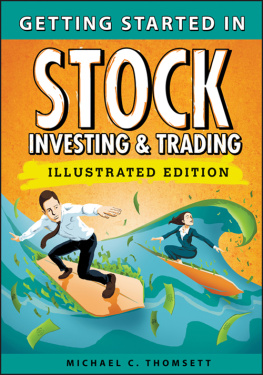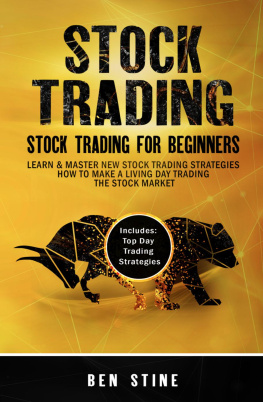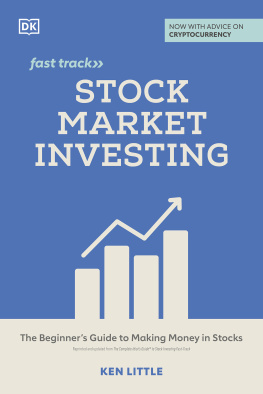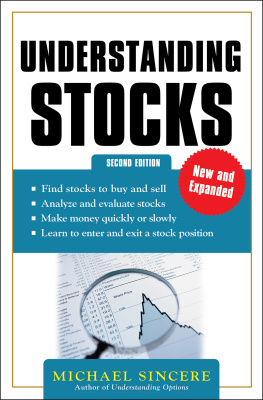ACKNOWLEDGMENTS
Thanks to those many readers who wrote to offer their suggestions and insights to previous editions of this book, including constructive criticism and clarifying questions. Their letters have helped to improve the ever-changing sets of explanations and examples, definitions, and other materials used in this book.
A very special thanks goes to Debra Englander, my editor for many years at John Wiley & Sons, whose encouragement through many editions of this and other books has been greatly appreciated.
Also, my thanks to Nick Wallwork and Gemma Rosey, whose editorial guidance on this edition was so valuable and professional.
ABOUT THE AUTHOR

MICHAEL C. THOMSETT ( www.MichaelThomsett.com ) has written more than 70 books on investing, real estate, business, and management. He is author of several Wiley books, including the eight editions of the bestselling Getting Started in Options, as well as Getting Started in Fundamental Analysis, Getting Started in Real Estate Investing, and Getting Started in Swing Trading. He also has written numerous other stock investing and trading books, including Winning with Stocks (Amacom Books), Stock Profits (FT Press), and Mastering Fundamental Analysis and Mastering Technical Analysis (Dearborn Press). The author contributes regularly to many websites, including the CBOE, Benzinga, Seeking Alpha and on his website, ThomsettOptions.com ; and writes articles for the AAII Journal and NAICs Better Investing. He also teaches five classes at the New York Institute of Finance (NYIF). Thomsett has been writing professionally since 1978 and full time since 1985. He lives near Nashville, Tennessee.

CHAPTER 1
THE NATURE OF STOCK INVESTING
The stock market has a strong allure. This is because it appeals both to the imagination and the profit motive of anyone trying to save money, earn profit, or save for the future.
The imagination aspect of the market allows you to see how it is possible to turn a pool of capital into a much larger pool, to beat the odds and the averages, and to set yourself up with security for the future. The truth is that this is entirely possible, but much more difficult to accomplish. The relationship between risk and opportunity is inescapable; so making that quick fortune is not as easy as anyone wishes.

Key Point
Opportunity and risk are directly related as two sides of the same coin. As one increases or decreases, so does the other. This relationship between opportunity and risk is an essential concept in successful investing.
Profit motive is equally as compelling. Everyone would like to be able to outperform the safe and secure guaranteed savings account, which yields so little that it loses purchasing power over time. If inflation is higher than the rate you are paid, leaving money in an insured account eats away at your capital. Added to this is the effect of income taxes. Taken together, inflation and taxes make it virtually impossible to accumulate value over time and in real terms.
These are the reasons for the allure of the stock market.
FAVORABLE CONDITIONS FOR OWNING STOCKS
The market contains many aspects favoring ownership of stocks, and is a matter of balancing risk against reward. These aspects include:
1. Dividend income. Many stocks pay dividends, meaning a regular quarterly source of income. Dividends might look quite small, but they add up. If you reinvest dividends to purchase additional partial shares, you turn simple interest into compound interest. That means your money grows faster. In addition, many companies pay a very attractive interest rate. For example, over 650 listed stocks yield between 4 and 6 percent per year.

simple interest
Interest calculated at its annual rate and without compounding; for example, dividend yield represents the simple interest paid on stock each year.

compound interest
Interest calculated at a periodic rate based on the stated annual rate. For example, a 4 percent interest rate compounded quarterly represents compound annual interest of 4.06 percent (1.01 1.01 1.01 1.01) = 1.0406, or 4.06 percent.
2. Favorable tax treatment. Both dividends and capital gains may be taxed at lower rates than other income. For capital gains, the tax rate is based on the holding period of stock; so the tax code provides an incentive for people to invest in stocks.
3. Flexibility. Investing in stocks is a flexible matter. The market is set up to accommodate investment in a number of variations. These include owning stock directly, ownership through mutual funds or exchange-traded funds, and even more advanced methods such as trading of options on listed stocks. The market is set up to respond to what investors and traders want.
4. Affordability. In the modern market, the cost of trading stocks is very low. Online discount brokerage services are available for anyone willing to make decisions without a stockbrokers advice, with trades costing less than $10. In the past, trading was relatively quite expensive.

capital gains
Profits on investments such as stocks, taxed at a lower rate than other income if the asset is owned for one year or more.
5. Access. The Internet has brought down the cost and expanded the markets to more people than ever before. This is a great benefit, but the evolution of access has also created many problems. For example, it is possible to trade quite actively, meaning more people today move in and out of stocks in very short time periods. Some market observers think this is detrimental to the markets, while others believe it is simply the way that people prefer to use the access itself. The speed of the Internet makes trade execution virtually instantaneous in most cases, so traders can place orders and then see the executed final price seconds later.

Key Point
The five aspects making stock investing attractive are dividend income, favorable tax treatment, flexibility, affordability, and access.
The greater convenience, higher access, and lower costs of todays stock market means that investment goals also change with time. A half century ago, traders tended to hold stocks for many years and the standard was to buy stocks and wait for profits to accumulate over those many years. Today, average holding periods are measured in weeks or even days rather than in years; this is due to the access and affordability of trading. Many people prefer shorter holding periods over longer ones, and attempt to trade the fluctuations in price. Market volatilityanother name for riskis seen by many as an attractive opportunity rather than as a problem.
RELATIONSHIPS BETWEEN PRICE AND FUNDAMENTAL VALUE
Next page

















